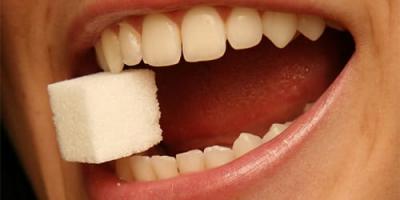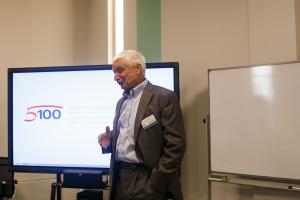Prosopagnosia (syn. facial agnosia) is a specific disorder of brain functioning in which a person ceases to recognize previously familiar faces. The degree of progression of such a disease can be:
- mild when the patient does not recognize the image famous people;
- severe when a person is not able to recognize his own reflection in the mirror.
In general, the incidence of this disease is 8-10%.
Problems with facial recognition (prosopagnosia) most often develop against the background of traumatic brain injury. In addition, provocateurs can be:
- malignant neoplasms;
- transferred earlier .
Clinical signs of this disease are extremely specific; they appear when patients:
- cannot remember the characters of a television series or film;
- mistaking strangers for familiar people;
- have difficulty recognizing people they met in a certain situation.
There are often no problems in establishing the correct diagnosis. In the vast majority of situations, a person is asked to take a specific test for prosopagnosia. The data obtained and the results of some instrumental examinations confirm the diagnosis.
The treatment is provided by a psychotherapist. While working with a patient, the doctor teaches him how to remember loved ones by their manner of voice, hairstyle or clothing style. However, it is impossible to completely defeat such a disease.
Etiology
Facial agnosia is essentially a lack of memory for faces. The pathogenesis of the development of such a disease lies in the fact that the occipital region of the head has a relationship with the posterior lobes of the left and right hemispheres of the brain. It is these parts that are responsible for processing visual information and perceiving space.
Under the influence of certain negative factors, the functioning of the above parts of the brain occurs. Thus, the pathology is a consequence of:
- traumatic brain injuries;
- infarction in the right lower-occipital zone;
- stroke artery, which is responsible for supplying the posterior lobe of the hemispheres;
- injuries to the back of the head and temples;
- formation of a malignant neoplasm in the right hemisphere of the brain;
- chronic insomnia;
- previous encephalitis;
- bilateral lesions of the lateral occipitotemporal or lingual gyrus.
In some situations, people experience partial pathology, which is almost always a consequence of severe overwork. In addition, such a disorder occurs against the background of a sudden awakening, for example, from someone’s voice, while the person does not understand who is in front of him. The peculiarity is that this state lasts from 1 to 5 minutes.
In addition, such a pathology can be congenital, and it has also been proven that it is inherited. It is in such cases that it is simply impossible to get rid of the disease.
It is noteworthy that, according to an analysis of all registered cases of prosopagnosia, the disease is most often diagnosed in left-handers, but at the same time such people do not suffer from.
Symptoms
The symptoms of such a pathology are specific and simply cannot be ignored. For example, people who have been diagnosed with prosopagnosia suffer from the following:
- mistaking strangers for someone they know;
- have great difficulty recognizing the faces of friends who have changed their hairstyle, hair color, or grown a beard or mustache;
- while watching a TV series or film, they cannot remember the current characters;
- have difficulties in perceiving the persons they meet in any particular situation. These could be doctors, salespeople, and even colleagues, especially if they change from uniforms to casual clothes;
- remember the “faces” of animals well - this means that with this disease there are problems with recognizing only human faces;
- cannot recognize their reflection in the mirror, which indicates a severe course of the disease;
- cannot distinguish a person's gender based on their face.
Otherwise, the patient is no different from a completely healthy person.
Prosopagnosia has a special form in which a person’s recognition of his own body is impaired. This is often the result of damage to most of the right hemisphere of the brain.
In such situations a person:
- does not recognize his own limbs;
- has a false sense of having multiple arms or legs;
- feels phantom pain;
- is sure that he is missing any limb;
- cannot recognize the presence of disturbances in the functioning of the organs of vision or hearing, as well as the development of paralysis.
At the same time, the patient understands the absurdity of the situation.
Diagnostics
Despite the fact that facial prosopagnosia has pronounced clinical manifestations, an integrated approach to diagnosis is required to identify it, establish the underlying cause and localize the pathological process.
Thus, diagnostics includes:
- study of medical history;
- familiarization with family history;
- collection and analysis of the patient’s life history;
- interviewing the patient and his relatives;
- thorough neurological examination;
- a specific test aimed at assessing facial recognition ability;
- CT and MRI of the brain;
- MSCT and angiography;
- consultation with a psychiatrist.
As for laboratory tests, with such a problem they have no diagnostic value.
Treatment
To date, specialists have not developed treatment tactics aimed at completely getting rid of this disease. In general, treatment includes:
- work of a speech therapist with a patient;
- psychotherapy, in which a person is taught in classes how to recognize relatives and friends. For example, by the style of clothing, the manner of speaking, the smell of perfume, or the characteristics of the hairstyle. In this case, those people with whom the patient communicates most often in the therapy are involved. Everyday life;
- consultation with a specialist who decides on occupational therapy.
Therapy lasts from 3 months to 1 year, but it is not possible to completely overcome the disease.
In the same time Special attention is given to the treatment of the disease that provoked the occurrence of the described disorder. In this case, treatment tactics are selected individually.
Prevention and prognosis
The congenital form of prosopagnosia cannot be avoided, since it is passed on from parent to child. In cases with an acquired form of the disease, general preventive measures combine:
- avoiding any head injuries;
- complete elimination of encephalitis and constant monitoring by the attending physician after recovery;
- avoiding mental fatigue;
- fight against insomnia;
- Regularly undergoing a comprehensive examination at a medical facility.
Prosopagnosia predominantly has a poor prognosis. The success of therapy is influenced by the following factors:
- patient's age;
- provoking source;
- localization of the pathological process in the brain;
- severity of the disease.
A complete lack of treatment leads to a complication such as desocialization.

Description:
Prosopagnosia (from ancient Greek πρόσωπον, prósōpon - face and ἀγνωσία, agnōsía - misrecognition) is a disorder of facial perception in which the ability to recognize faces is lost, but the ability to recognize objects is generally preserved. This condition is usually associated with brain damage in the right inferior occipital region, but new evidence has shown that there is also a congenital form of this disorder.
To help people suffering from prosopagnosia, successful therapies have been developed to help them learn to recognize people by features such as gait, hairstyle, voice, body type, manner of dressing, etc. Since the face is usually the most individual feature and the most important distinguishing factor in memory, people with this condition may find it difficult to correctly relate information about people and live a normal social life.
Causes of prosopagnosia:
Bilateral damage to the lateral occipitotemporal gyrus and lingual gyrus interrupts the interaction of visual afferentation with complexes of afferentations of other modalities. As a result, recognition of faces (prosopagnosia) and objects (object agnosia) is impaired.
Symptoms of prosopagnosia:
Prosopagnosia is caused by trauma, either tumor growth, or, most often, vascular disorders in the right infero-occipital region, often with spread of the lesion to the adjacent parts of the temporal and parietal lobes. Other aspects of the recognition system in prosopagnosics usually remain intact. But this is not a defect of perception, since such patients easily determine whether two faces are the same or not. Moreover, they recognize a person if they look at him and hear his voice at the same time. Thus, prosopagnosia is a modality-specific disorder in which visual information does not interact with information from other modalities and therefore cannot be interpreted as a particular image stored in memory.
Characterized by impaired recognition of familiar faces. Recognizing parts of the face and distinguishing a face from other objects, patients cannot determine its individual identity, sometimes they are not able to distinguish between the faces of men and women, the features of their facial expressions. They also do not recognize the faces of close relatives (husband, wife, children, attending physician), and in severe cases they do not recognize their own face in the mirror. When recognizing people, patients use workarounds, for example, recognition by voice, gait, smell of perfume, etc. Recognition of animals and birds is also often impaired. In mild cases, recognition of faces is impaired only in photographs and films. There is reason to regard agnosia for faces as a manifestation of a more general defect - the inability to evaluate, by certain specific visual signs, the uniqueness of an object or its image, which allows one to recognize this particular object among objects of the same type, for example, to find one’s mug or comb among others. mugs or combs. On this basis, this form of agnosia is often referred to as agnosia of individualized features. Agnosia for faces can occur in the absence of object and other agnosias, but in some cases it is combined with other gnostic disorders, in particular simultaneous or color agnosia or unilateral optical-spatial agnosia and disturbances of the “body scheme”.
Man with various forms Prosopagnosia is usually no different from a healthy person. One of the patient’s first complaints will be that it is difficult, sometimes impossible, for him to distinguish the faces of relatives and friends in new photographs. It becomes difficult for him to distinguish between heroes in films - they look alike to him.
According to Antonio Damasio, some patients with severe forms Prosopagnosia does not distinguish not only faces, but in general any objects belonging to the same type of objects. For example, they perceive a face only as a face, a car as a car, and cannot determine whose face it is or what brand of car it is.
Another interesting aspect of the problem: prosopagnosia in old age affects mainly left-handers, the phenomenon of which has been quite well studied. It has been noticed that those who prefer writing with the left hand are more often born into late marriages than to young parents. This discovery was made quite recently and belongs to the psychologist from Canada S. Koren. From her point of view, the physiologically normal age for childbearing is 18-24 years. She made certain calculations, according to which 30-35-year-old parents of left-handed people have 25% more births, 35-39-year-olds - by 69%, and 40-year-old fathers and mothers have a very close chance of having a left-handed child. to 100%.
Another phenomenon of prosopagnosia is poorer memory of people with whom the patient comes into contact in everyday life than distant relatives. This is most likely due to several factors:
in everyday life, people constantly change clothes - it is difficult for the patient to adapt and remember these little things;
The patient often communicates with distant relatives and distant friends by telephone - this helps to better remember the timbre of the voice and manner of speaking.
As statistics show, there are very few people in the world who have a photographic memory that allows them to remember every person by sight. Moreover, this skill can be extremely useful in moving up the career ladder or establishing important business contacts.
All Courses Com decided to take a closer look at the problem and help its readers learn to better remember people's faces.
Before treating any problem, you need to understand its causes. Why do many people complain of poor memory for faces? The reason may be undeveloped visual memory, inability to recognize facial features, inattention to the person himself, poor eyesight, as well as deep self-absorption (this usually affects people in creative professions), and others. Here are some techniques you can use to to solve this problem.
We observe intelligently
When trying to remember a person's face, use the concept of intelligent observation. How does the method differ from a simple “See and remember” method? Usually, a person who remembers looks at the face of a new acquaintance as a whole and therefore, as a rule, does not remember anything. It is wise to focus your attention on distinctive details: features of the shape of the nose, the shape of the eyes, complexion and its shape, features of the hairstyle.
Division into parts
If you can’t remember the whole person, psychologists recommend a method of dividing the object into parts and then remembering these parts separately, making mental notes. The point is that by highlighting the noticeable parts, the object is easier to remember. You should first describe the general features, then the distinctive ones, and then add details.You should describe your new acquaintance from top to bottom, that is, from head to toe. Having stopped at the face, you should describe in turn: hairstyle, forehead, eyebrows, ears, eyes, nose, lips, wrinkles (if any) and the feature of the chin.
All details must be described on a three-level scale: narrow, normal and wide. On some elements you can make several characteristics, for example, the nose can be described as humpbacked, linear, the size of the wings, and so on.
Tony Buzan Method
Which in certain circles is called the method of social etiquette, instructs people who want to learn to remember faces to be polite and show genuine interest in the new interlocutor.
It will help to highlight a new acquaintance if the person remembering him respects him as a person and imagines that in each of him there is a universe of new qualities and colors. You should pay more attention to the person, keeping him in sight and observing his habits. A new acquaintance about whom more information is known remains in memory for a longer period.
Self-discipline and self-hypnosis
A person may have an excellent memory, but if he is not confident in himself and constantly pushes himself, he will get confused and will not remember the simplest things. This is also the reason why a new face may simply not be imprinted in memory. The consciousness of almost every person is capable of assimilation, processing and remembering a huge amount of information. It is important to believe and convince yourself that the new face will definitely be remembered.
Open your eyes
Everyone who is poorly sighted knows why such a person does not greet first. He just sees very poorly. Therefore, if your vision requires it, wear glasses or contact lenses.
It has been revealed that in most cases, when a person complains of poor memory for faces and has poor vision, the problem is almost certainly that he does not wear or rarely uses glasses/lenses. A person with good eyesight focuses on details that will prevent him from confusing similar people. This important point and this may also be the problem.
Associate faces with character or appearance
Linking all the data about a person together will help create associations. If a person is not immediately imprinted in memory, an association will first emerge, and maybe even a first and last name. By the way, All Courses Com has already done a review for its readers.How to remember a face forever
To remember for a long time the people you met during the day, remember them after 20-25 minutes, then after an hour, and for more lasting memory, in the evening before bed. Remember faces in detail, information about people that you learned additionally. View the accounts of new acquaintances in in social networks, especially the sections with photographs. If you are meeting a group of people, it is convenient to ask for business cards. All that remains is to reliably associate the owner of the business card with herself - and the person will remain firmly in memory. It is important not to confuse where whose business card is - when getting acquainted, you should pay attention in conversation with each person in turn and thereby gain time for memorization. Take short breaks, looking at business cards and their owners, associating the design of the cards with new acquaintances.
The ability to remember faces varies greatly among different people. For many, you need to see a person several times to recognize him by appearance. Some people too easily forget a well-known face, although they have not seen it for some 2-3 years. On the other hand, many recognize the faces of people they have met once, and once the impression they receive seems to remain forever, subject to frequent revivals. This ability is especially strongly developed among policemen, detectives, hoteliers and other people whose profession forces them to meet many people and in whose interests it is to remember and recognize those with whom they meet. This is a valuable gift, because the new acquaintance will be very friendly to you, since you quickly get to know him. Conversely, the inability to recognize people can be perceived as an insult and even make them dislike you.
The lack of development of this faculty shows that man has not made particularly energetic use of that part of his mind which notices the appearance and appearance of the people with whom he has encountered. Such a person can only look at others, but not see them. The faces he meets do not interest him, and he himself does not pay due attention to them. The rule that if interest is weak, then attention is weak, and if attention is weak, then memory is weak, fully applicable here. A person who wants to develop this ability must begin by studying faces, taking an interest in them and treating them with attention. In this way, all observation will be focused on the appearance and appearance of people, and soon great success will be noticed. Such people could be offered the study of some elementary work on physiognomy, which will increase their interest in the study of faces, helping to improve memory in this direction.
To develop your powers of observation regarding faces (if you really need it, of course), you should study the face of every person you meet, noting general shape his head and face, as well as his nose, mouth, chin, forehead, and at the same time constantly thinking: “I will recognize you when I see you again.” Such a thought will stimulate the will to acquire a clear and distinct impression.
Acquiring an interest in this, as well as a careful study of the human face, will reward anyone for the time and labor spent, especially since with memory exercise you will also gain knowledge of physiognomy, especially if you study the elementary manual on this subject.
There are few people who could quite clearly remember an absent friend, and their attempt to describe the appearance of a supposedly close acquaintance will be all the more amusing. Try to do this yourself - and you will see how little you can really remember, although you will recognize him when you meet him. Describe from memory, if you can, the eyes, nose, mouth of your best friend.
Look at the first person you meet and notice whether his forehead is high or low, narrow or wide; what are his eyebrows, straight or arched, and what color; what kind of nose does he have - aquiline, Roman, Greek, snub; whether his mouth is small or large; whether his teeth are good or bad, whether they are large or small; does he have a beard or mustache, is it long or short, etc. Do this when you see every face, take note of the details, as if you need to write a report about him and as if your career depends on the completeness and correctness of the report. A person’s face studied in this way is not forgotten. Several such exercises are very useful for developing the ability that everyone lacks. You will begin to distinguish facial features and, of course, perceive them because you are interested in it. Awakened interest will also give a clear impression, and the latter will lead to easier recall.
Then practice calling to mind the faces of people you have met, drawing them in your mind. Having mastered the art of reproducing a mental image of the persons you meet, you can easily recognize a person even after a significant period of time. Repeated revival of a mental image is equivalent to meeting with this person. You have probably noticed how easy it is to remember and draw a mental picture of a photograph or portrait, and how difficult it is to bring to mind the same face as it really is.
However, it's all a matter of habit, and after a few exercises it will be just as easy for you to remember a living face as its portrait. We heard about one artist who had the gift of physiognomy; he sketched faces extremely quickly. His secret was that he divided all kinds of noses, eyes, mouths, chins, eyebrows, face shapes, etc. into categories, and marked each such category with a specific number. He quickly examined the face of the person posing to understand his expression and general appearance, quickly noting in his mind the rank of each feature, such as: face shape - 1; eyes - 8; eyebrows - 2; nose - 3; mouth - 4; chin - 7, etc.
By studying faces, you will involuntarily and soon begin to divide them into categories, which will help you become a good physiognomist and increase the interest and pleasure in the task being performed.
As a result, we will say that the ability to notice and remember faces can develop like any other abilities and that the secret of this development lies in the following: be interested in faces, study them, attention will follow interest, and memory will follow attention.








